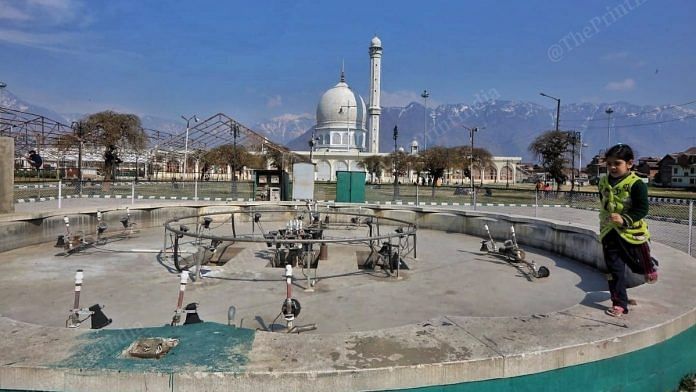Srinagar: A reflective board that says ‘Tourist Facilitation Centre, Hazratbal’ leads to a bricked building, but it’s locked, with garbage strewn around, and no semblance of activity. Meanwhile, the Sufi Interpretation Centre is nothing but an empty structure with chipped and damp walls, and a public toilet with no electricity.
All this is part of the “renovated” Hazratbal shrine in Srinagar. Situated on the left banks of Kashmir’s famous Dal Lake, it was inaugurated by Prime Minister Narendra Modi amid much fanfare last week, as part of a project called the ‘Integrated Development of Hazratbal Shrine’, to create “world class infrastructure and amenities for pilgrims and tourists”.
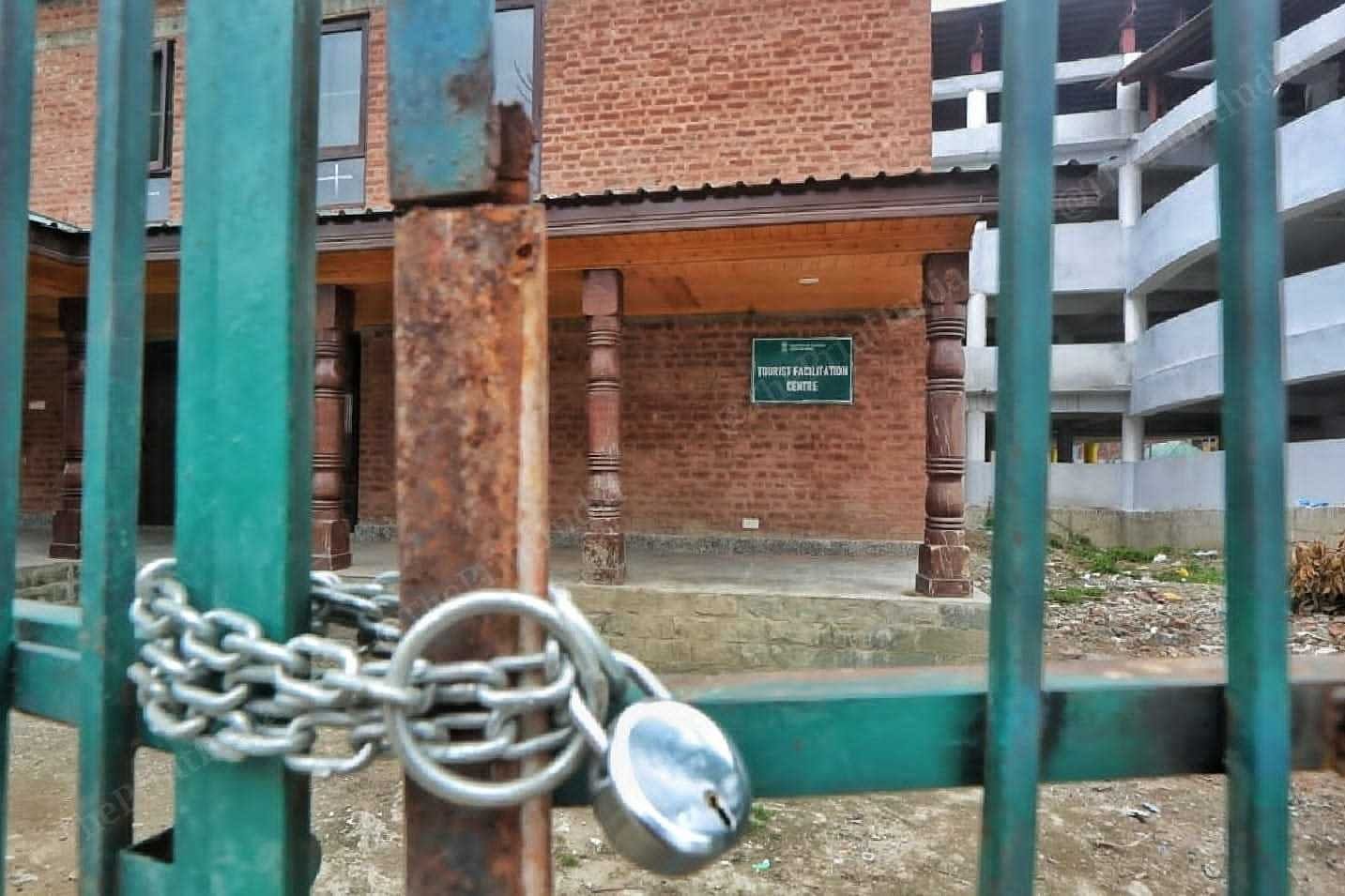
That’s not all, the boundary wall — which Waqf Board members managing the shrine say was constructed more than five years ago — is worn out with stones missing. Many lamps meant for the “illumination of Hazratbal shrine’s precinct” — installed more than three years ago, the caretakers say — are broken. A defunct fountain worth lakhs is now being used to dry clothes, aerators meant for “rejuvenating Dal Lake Front” are dysfunctional, and the Dal ghat remains filthy.

The shrine’s compound still seems to be undergoing renovation, with scattered cement bags, strewn rubble and mortar and piles of wooden logs in corners.
All this, after the government spent over Rs 33 crore over a period of around seven years, to give the shrine a facelift to ensure a “holistic spiritual experience for pilgrims and tourists”.
The Hazratbal shrine, one of the most important Muslim shrines in the country, is believed to preserve ‘Moi-e-Muqqadas’ (the sacred hair of Prophet Muhammad’s beard). The relic is displayed for public view on significant occasions such as the Prophet’s birthday.
The shrine is said to have been established by Inayat Begum, the daughter of Khwaja Nur-ud-Din Eshai, the custodian of the holy relic. It was converted into a prayer hall in 1634. The construction of the present shrine comprising the white marble edifice with a dome began in 1968, and was completed 11 years later in 1979, according to the J&K Tourism Development Corporation website.
Speaking to ThePrint, Commissioner Secretary (Tourism Department), Jammu & Kashmir, Yasha Mudgal said that the shrine’s renovation is not a new project and the construction of its components has taken place over a period of time, so some wear and tear is expected. She further said that multiple agencies were involved in the project, each delivering different components to the tourism department.
“It is an old project with various components. The executing agencies have given their best, and we have recently taken over components, including the tourist centre and Sufi centre. They shall be operationalised very soon in consultation with the Waqf board,” Mudgal added. “It is a valuable asset, and pilgrims and tourists will benefit greatly. The shrine has undergone substantial improvements.”
According to government documents, the project was launched under the tourism ministry’s Pilgrimage Rejuvenation and Spiritual Augmentation Drive (PRASAD) Scheme in 2014-2015 and was rolled out by then chief minister Mehbooba Mufti in 2017.
The Hazratbal project involved seven executive agencies — the Department of Tourism, Housing Board, J&K Small Scale Industries Development Corporation Limited, Lake and Waterways Development Authority, J&K Projects Construction Corporation and J&K Cable Car Corporation.
According to an official in the tourism department, the delay in construction and renovation was due to several reasons including non-coordination among agencies, delay in sanctioning of funds, handovers and the pandemic, but the project was completed within the prescribed time.
“By and large the project is complete. Since the handover has been completed, whatever is left of it will be done fast. The entire area of the project is 1,600 kanals (200 acres) and a lot has been done, from putting a boundary, making drainage, landscaping, and other elements to beautify the shrine like lighting, fountains. The structures have been readied and whatever minor things are left will soon be done. It is a priority,” the official said.
Speaking to ThePrint on condition of anonymity, a member of the Waqf Board which has been managing the shrine said that the inauguration was done in a hurry.
“It seems that the government was in a hurry to get it inaugurated by the PM,” the member said, adding: “They did not even wait to ensure that everything is operational and functional.”
Chairperson of the Jammu and Kashmir Waqf Board Syed Darakhshan Andrabi however said that minor faults aside, the government’s initiative to sanction so much money for the project and also assure that it is constructed, is a big achievement and sends a message across that Modi cares for Indian Muslims as much as he does for Hindus.
“It is a message by PM Modi that he is not just concerned about the development of Ayodhya Ram temple but also the holy Hazratbal shrine. A lot of work has been done in the past year under the central government for the development of the shrine and this is just the beginning. It will only get better,” she said.
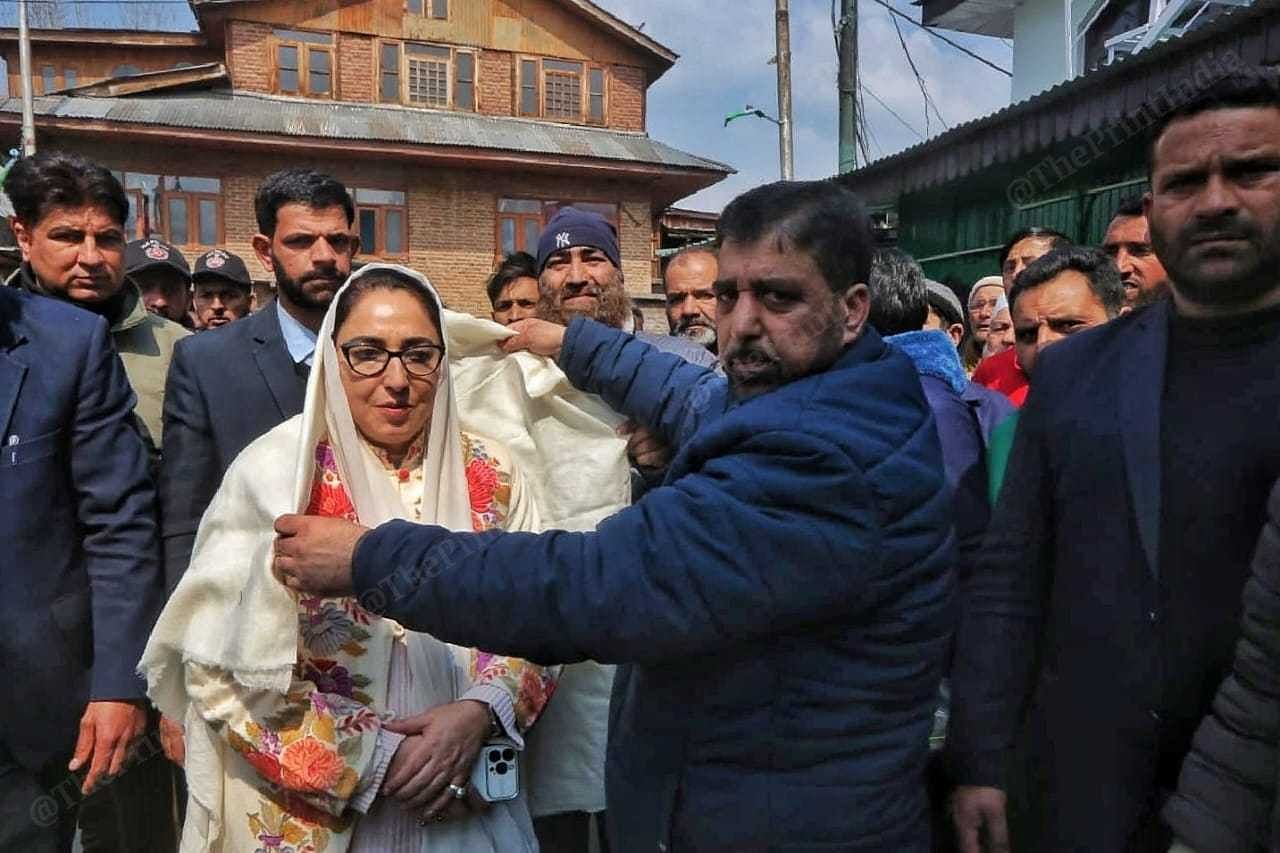
She added that the Waqf board is now collaborating with the government for the renovation and upgradation of 72 more shrines.
“Inauguration of the renovated Hazratbal shrine by PM Modi is a message to the Muslims across the world and across the border that he cares for the community. It is a message for those who portray him in a bad light. And we are grateful that this message was given from Kashmir,” Andrabi further said.
Coming weeks before the Lok Sabha elections, the inauguration of the developmental project of one of the most important Muslim shrines in the country is being seen as part of the BJP’s outreach to the Muslim community — in line with its political slogan of ‘Sabka Saath, Sabka Vikas, Sabka Vishwas’. This is particularly crucial as the party seeks to expand its voter base among Muslims from the estimated 8-9 percent through several campaigns and outreach programmes specifically targeted at the community.
Speaking to ThePrint earlier, Faizan Mustafa, former vice-chancellor of the NALSAR University of Law, Hyderabad, had said that the move carries both electoral and diplomatic messages.
“The messaging is pretty clear. On 22 January, there was the Ram temple inauguration in Ayodhya for the majority community, now this is for the minority community. It is in line with the BJP’s stated policy that there will be appeasement for none, but justice for all,’ he had said.
Also Read: Ayodhya Ram temple a political game-changer for Modi, BJP? Pew survey on religion has answers
Crores spent: Successes, failures and a blame game
According to J&K tourism department data, the Integrated Development of Hazratbal Shrine scheme was sanctioned at a cost of Rs 4,021.05 lakh (Rs 4 crore), of which Rs 3,393.15 lakh (Rs 3.39 crore) has been allotted and Rs 3,340.599 lakh (Rs 3.34 crore) has been spent.
The key components of the project include site development of the entire area, construction of the boundary wall of the shrine, illumination of Hazratbal shrines precinct, improvement of ghats and Devri Paths around the shrine, construction of a Sufi Interpretation Centre and Tourist Facilitation Centre, installation of signages, construction of a multistoried car parking and public convenience block among others — all of which has been completed.
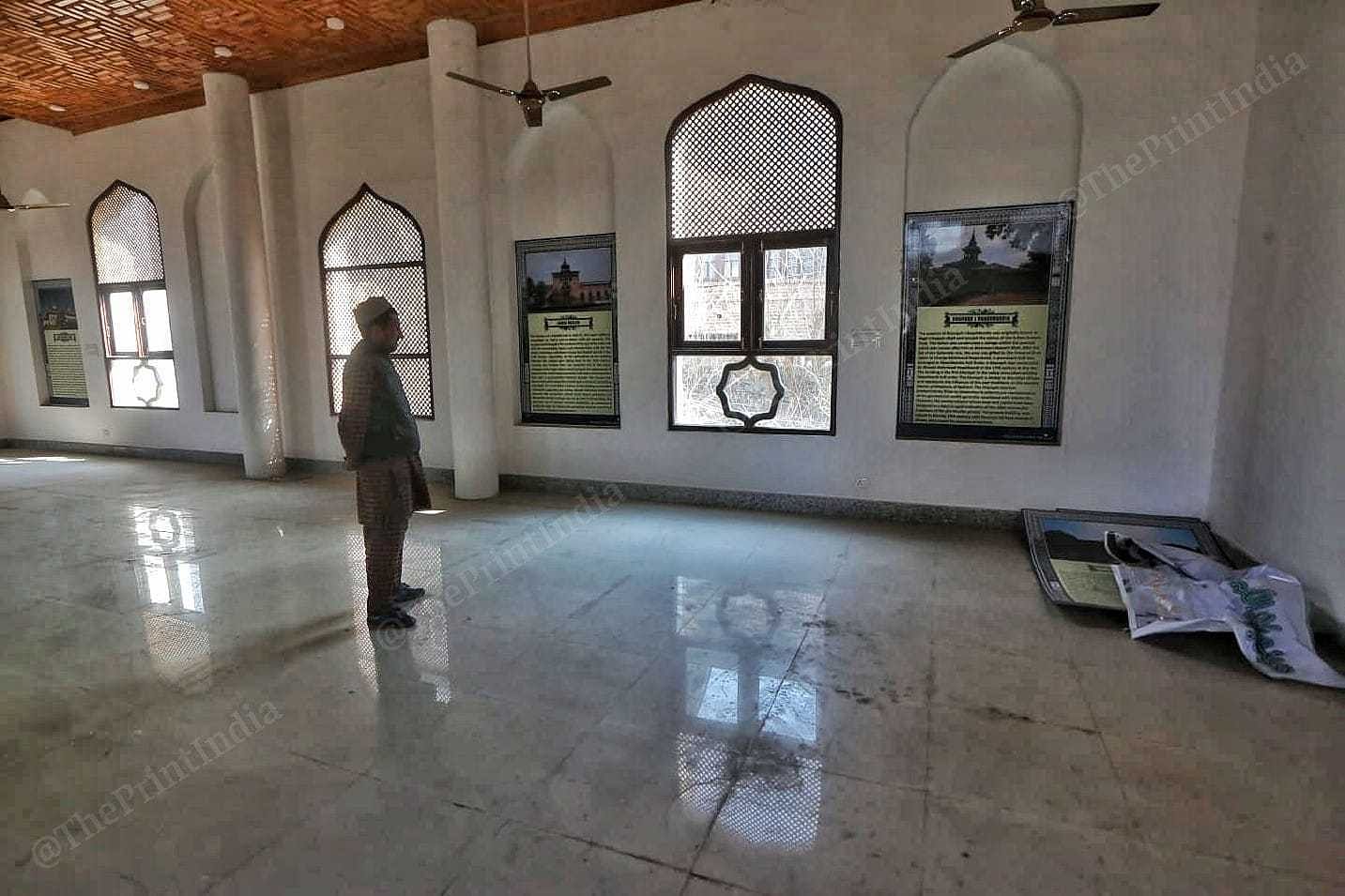
One of the shrine’s caretakers however said the money spent on these components does not align with the quality of material used in its construction.
Here is a look at how much was spent on each component.
According to tourism department data, accessed by ThePrint, the cost for site development of the entire area including construction of a boundary wall was Rs 3.57 crore, which is shown as completed. However, the wall was constructed over five years before the inauguration of the renovated shrine and is now worn out.
The cost for ‘illumination of Hazratbal shrine’s precinct’ is shown as Rs 12.77 lakh. Although the structures have been put up, many lamps are broken, non-functional. In addition, the cost of illumination of the site and a road along the lakefront was Rs 24 lakh, which has been completed.
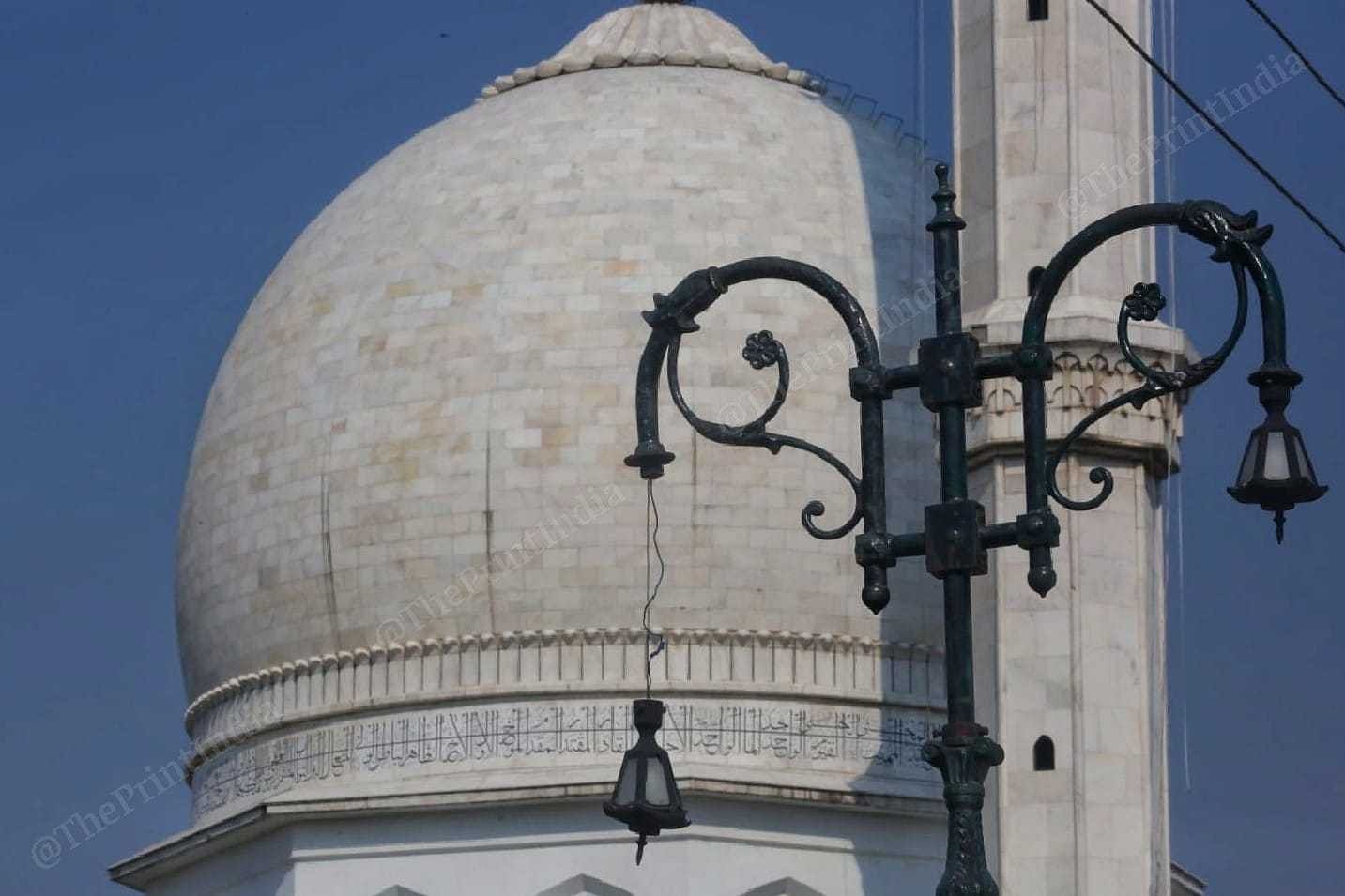
The money spent on the multistoried mechanised parking is shown as Rs 1.01 crore, the status of which is “100 percent complete” in official records. However, on ground, while the construction of the parking structure is complete, work on the periphery remains suspended. Heaps of bricks, sand and mortar lie across the compound.

The construction of the Sufi Interpretation Centre, which currently lies empty, cost Rs 1.36 crore. Similarly the construction of the non-operational Tourist Facilitation Centre cost Rs 1.17 crore.
“The boundary wall was constructed years ago and is maintained for any severe damage every now and then. Moreover, poles with smaller and bigger lights have been put up that are functional. There may be some bulbs that have broken, but that too is part of regular wear and tear that is taken care of,” the government official, quoted earlier, said. “As far as the parking and tourist and Sufi centres are concerned, they were handed over to the department very recently and will soon be made operational.”
Another key component of the project is the construction of a public convenience complex with over 300 toilets for men and women, along with an entrance gateway, for which an expenditure of Rs 4.60 crore was incurred. Despite people using the toilets on Fridays when crowds peak, the facilities don’t have electricity.
“The construction of this toilet complex was of great help. But despite it being constructed years ago, there is no electricity, there are water seepage and water-logging issues and this needs maintenance. The material used [in construction] is also not very good quality. How can this new building have seepage issues and cracks on the wall?” the caretaker mentioned earlier, said.

Furthermore, the cost for the improvement of ghats and Devri Paths was Rs 7.26 crore which has been successfully done.
The cost for the construction of a mechanised tensile structure to provide shade to the visitors and the entrance courtyard, is Rs 92.23 lakh, but two of the four installed umbrellas do not close and one is broken.

“The idea was to make huge umbrellas like we have in Madinah in Saudi, under which people can sit and offer namaz. The ones that are mechanised, can be opened or closed. But these umbrellas are useless. They said these will open and shut, but they don’t. One of them broke because of heavy wind from the lake side and since then has not been fixed,” Khursheed Ahmad, the administrator of the shrine, said.
Moreover, the Sheshkhana, where women offer namaz, was renovated at a cost of Rs 81.70 lakh according to the tourism department data, but the walls have cracks, the paint is chipped and damp.
“This Sheshkhana was built more than 50 years ago. We are surprised that this is shown as renovated. Not even a single stroke of paint has been put here. You can see it for yourself,” a member of the Waqf board and caretaker of the shrine, said.
To beautify the banks of the Dal Lake overlooking the shrine, aerators (water sprinklers) were installed, but they now lie defunct along with a main fountain in the garden area. For all this, Rs 78.6 lakh was spent.
“They put these fountains in but they only worked for a few days. Since they have just been floating like this,” the caretaker said.

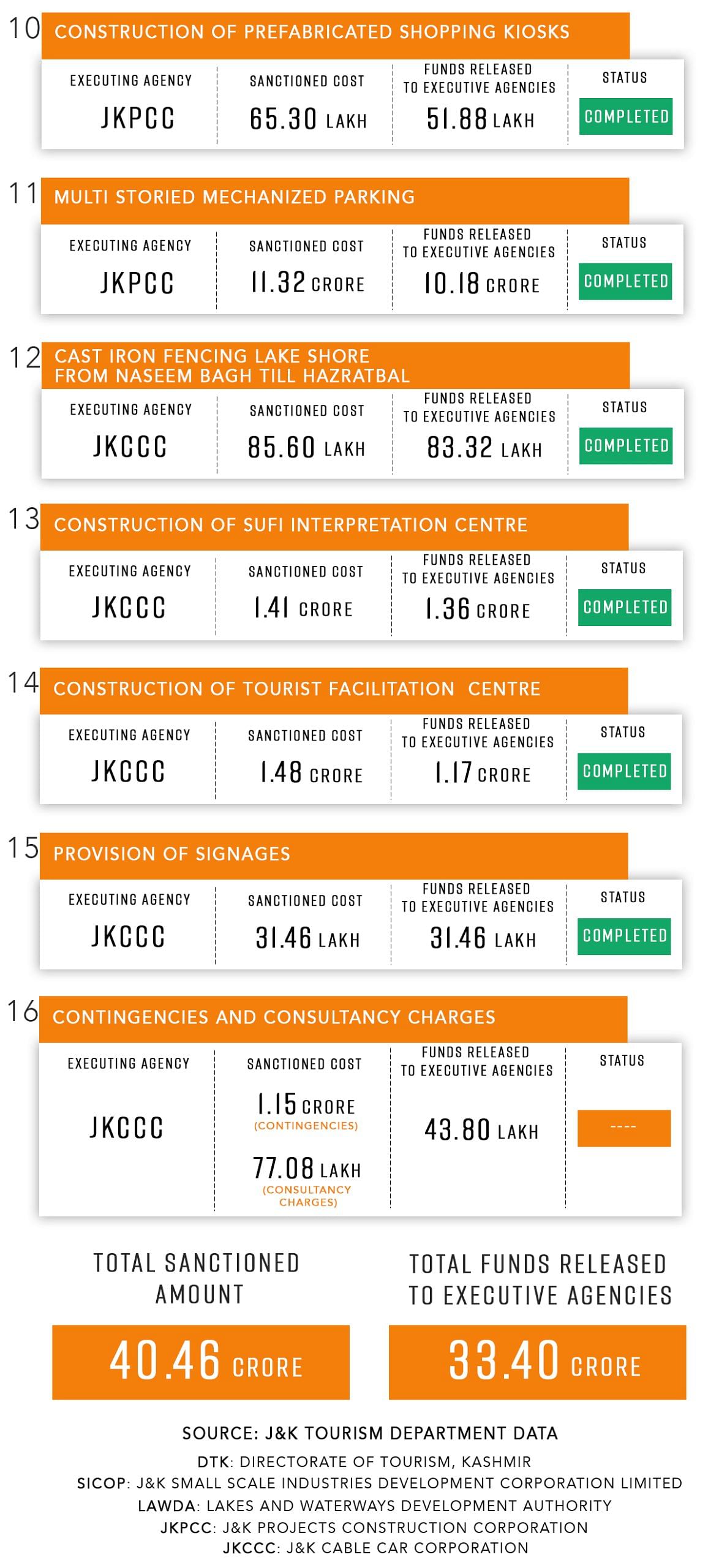
The government official quoted earlier said that the Waqf Board never officially informed them about the wear and tear. “Waqf Board is the authority that is managing the shrine so they should convey these things to us. We have written a letter to them asking them to inform us if certain things require repair. They did not know how to operate those mechanised umbrellas, so they broke. Now we will send a representative who will teach them how to operate those,” the official added.
Another component of this project was the construction of prefabricated shopping kiosks, for which Rs 51.88 lakh was spent. However, they lie unused as they have not yet been allotted to users for doing business.
The documents accessed by ThePrint also mention the cost incurred to put up stone, reflective, small and big signages that include signboards for toilets, the Sufi centre, parking and others, as Rs 31.46 lakh. The documents also show a combined fund for contingencies and consultancy costs as 43.80 lakh.
(Edited by Gitanjali Das)


